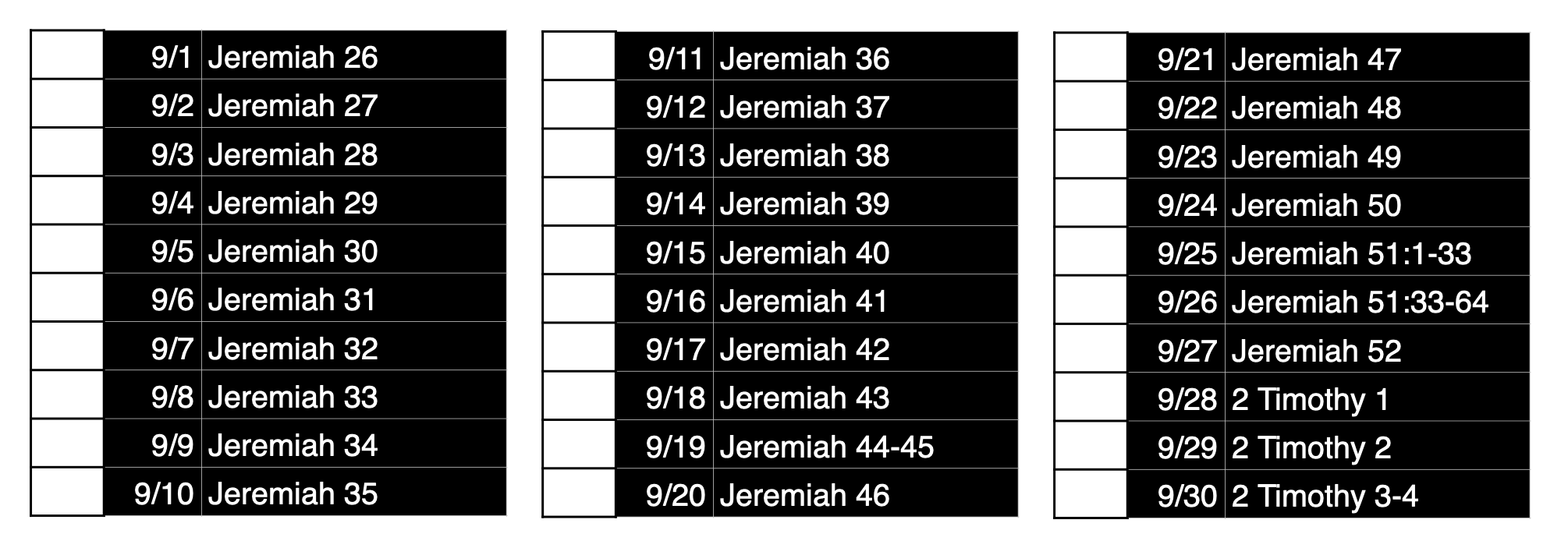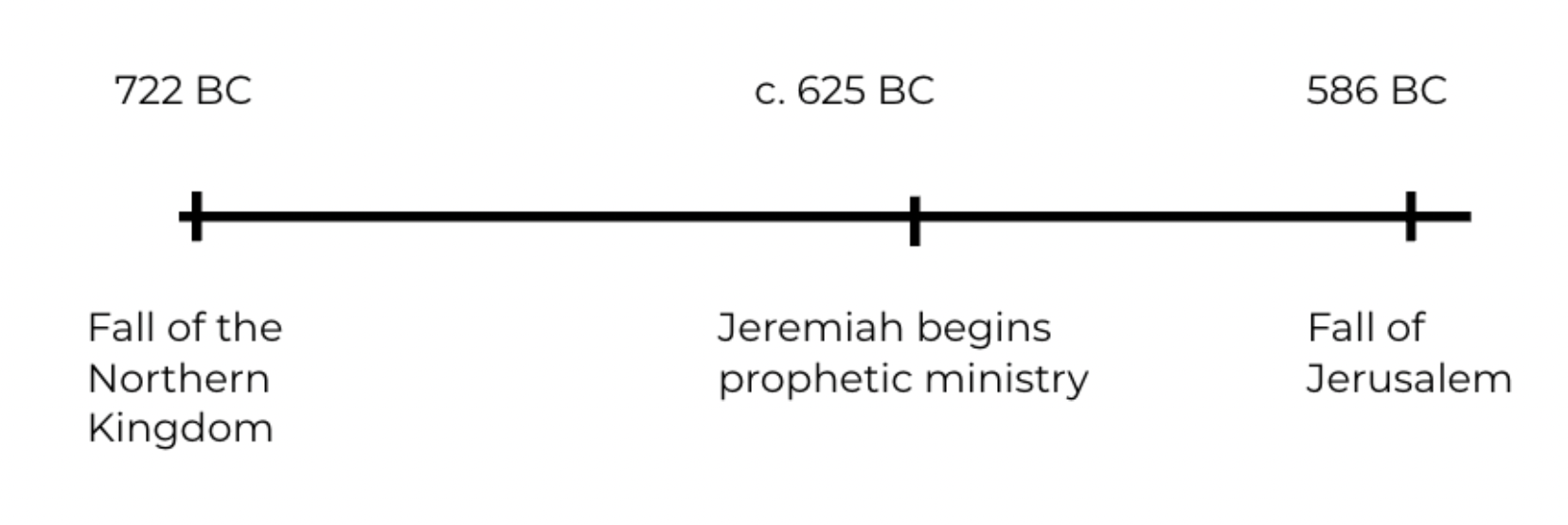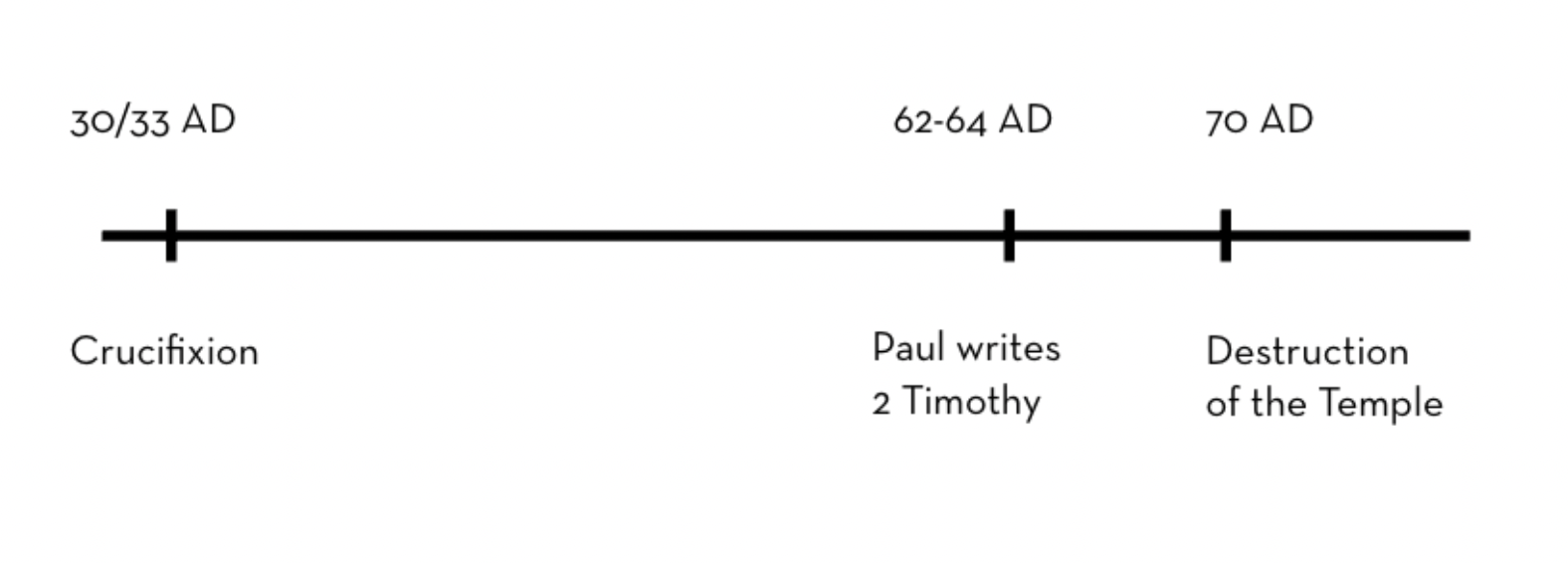September Bible Reading Plan
DAILY READINGS
Books: Jeremiah, 2 Timothy

JEREMIAH
Timeline (Approximate)

Authorship and Purpose:
The book of Jeremiah contains a collection of words from the prophet Jeremiah, who prophesied in Jerusalem in the last decades before the exile to Babylon. Jeremiah’s words were written down, at least partially, by the scribe Baruch (36:1-8, 27-32), who was tasked with compiling all of Jeremiah’s teaching about 20 years after he began his ministry.
By the time Jeremiah began prophesying, Israel had become an unjust and unfaithful people. They were worshiping idols outside the temple, neglecting the societal outcast, and were generally failing to remain faithful to the covenant established in Exodus (see Jer. 7). God, speaking through Jeremiah, pronounces judgment upon Israel for their unfaithfulness, yet this judgment is not without hope. A time will come when God will call forth a remnant of Israel and establish a new covenant with them (Jer. 31:31). This people will be God’s people, and God will be with them as their God, cleansing them of their sin and writing the Torah (law) on their hearts.
Reading Jeremiah:
As prophetic literature, Jeremiah is commenting on Judah’s situation from God’s perspective. Prophecy includes but is not limited to speaking about future events which will take place. The prophets functioned as God’s mouthpiece, and in the case of Jeremiah, that meant speaking judgment over the unfaithfulness of Judah. Despite words of hope, Jeremiah was not liked by many in Jerusalem, including some of the kings, one of whom threw the first collection of Jeremiah’s words into a fire (36:23).
The book of Jeremiah consists of not only narrative sections but also large sections of poetry. One important feature to look for in reading Hebrew poetry is parallelism, or the “rhyming” of ideas. Often time a singular idea will be repeated or developed in the course of a stanza to highlight an important point. This repetition or development of an idea allows the text to communicate on a deeper, emotional level rather than simply stating, for example, that Israel was unfaithful. Ultimately, though analyzing poetry is important, poetry as a literary form works best when it moves the reader. Allowing the poems of grief, judgment, and hope to move you as you read the text will better communicate Jeremiah’s message.
This month, we are finishing the rest of book which covers the judgment of both Israel and the nations, but also the promised hope of the new covenant. Even though Jerusalem fell and the temple was destroyed, hope still exists.
Key Themes:
God’s Judgment — Though God is gracious and merciful, He is still just and will pass judgment on sin. Israel had been consistently unfaithful to the covenant and were neglecting the vulnerable in society, and so a"er patiently waiting for them to repent, God is going to pass judgement upon them with exile to Babylon.
The New Covenant — A"er the exile, God will call forth a faithful remnant and will establish a new covenant with this people. This new covenant will be an everlasting covenant, and was established in Jesus by His blood.
Structure:
- Jeremiah’s call — (1)
- Accusation and warning — (2-25)
- Judgment and hope for Israel — (26-45)
- Judgment and hope for all nations — (46-51)
- Destruction of Jerusalem and exile — (52)
2 TIMOTHY
Timeline (Approximate)
Authorship and Purpose:
The book of 2 Timothy was written by Paul while imprisoned in Rome. This imprisonment could have been part of the one mentioned in Acts 28, or a second later imprisonment, as late as 67 AD according to some. Either way, this is the last letter Paul writes before his death. Paul addressed this letter to Timothy, who was still in Ephesus, urging him to continue preaching the Gospel and to bring him some personal belongings while waiting in prison.
2 Timothy is a very personal letter of Paul’s written to a close friend and co-worker in Christ. Paul is fairly certain he will not survive this imprisonment and wants to pass on some final encouragement and instructions before his death.
Reading 2 Timothy:
As a letter or epistle, 2 Timothy, is written in a specific context to a specific audience, in this case just Timothy. As one of Paul’s most personal letters, 2 Timothy contains instructions which obviously does not pertain directly to us (ex. the instruction to bring him his cloak in 4:13), but as Scripture, it contains important truths which are important for the life of Christians throughout history (ex. 3:16).
To zoom in on just these personal instructions contained in 4:9-18, we learn that Paul has been le" alone in prison. Some potentially le" for valid ministry reasons, while others not so much, but they all le" Paul and now he stands alone. Even so, Paul knows that God is still with him and strengthens him. From this, we learn that even if everyone else abandons us when we su#er for the Gospel, God is still with us. Even when faced with death, we can know that our ultimate hope is assured and can say along with Paul, “the Lord will rescue me from every evil deed and bring me safely into his heavenly kingdom. To him be the glory forever and ever. Amen” (4:18)
Key Themes:
Suffering and persecution are to be expected as Christians, but we are to remain steadfast in our faithfulness to God knowing He is faithful to save.
Though we may suffer for it, we must preach the Gospel as it, along with all of Scripture, is “God-breathed” and has the power to save.
Structure of Jeremiah:
- Greeting — 1:1-2
- Encouragement to endure — 1:3-2:13
- False teachers and Timothy — 2:14-4:8
- Final instruction and closing — 4:9-22
